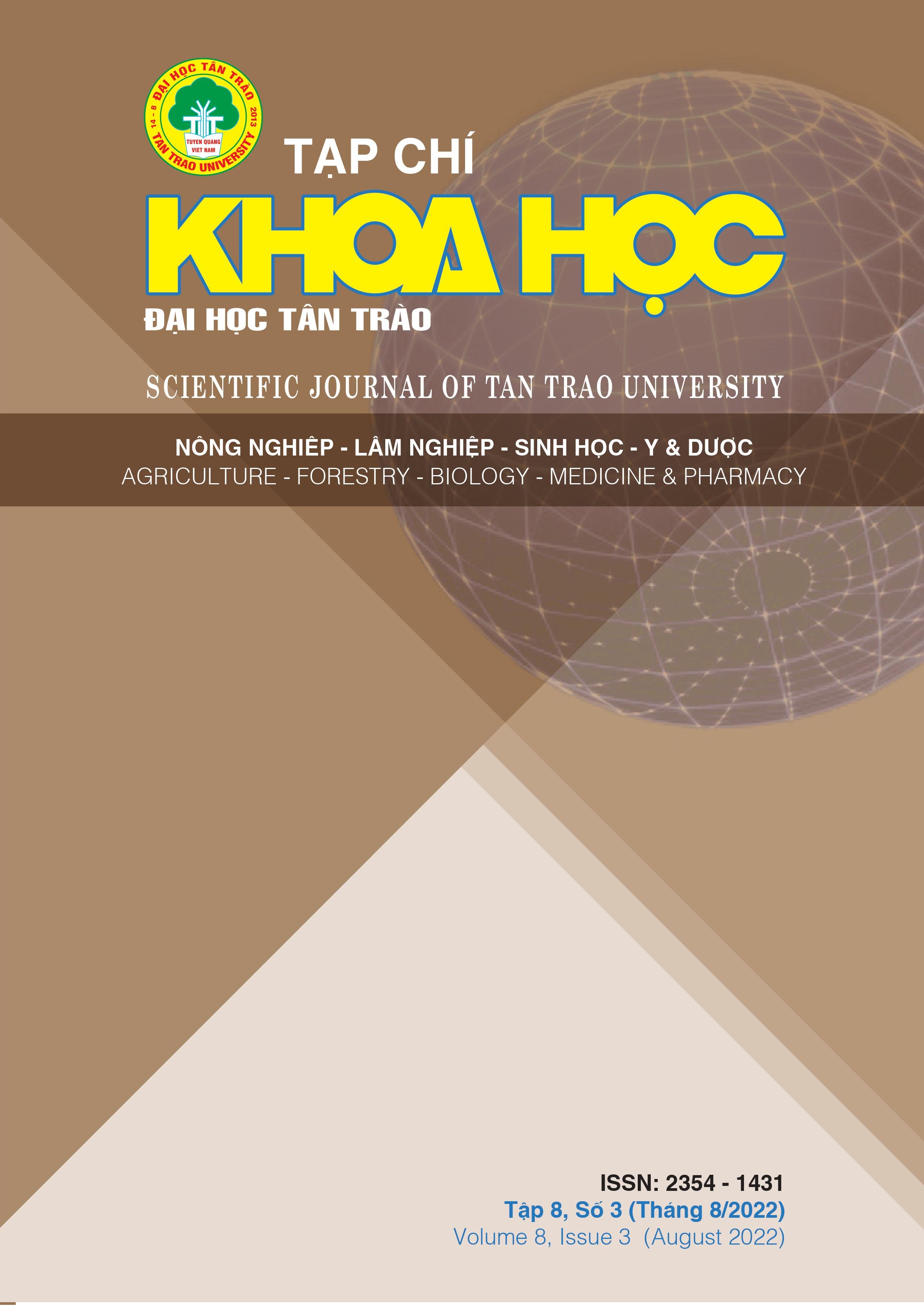OPTIMIZATION OF THE EXTRACTION PROCEDURE LIQUID EXTRACT FROM MORINGA OLEIFERA, PHYLLANTHUS AMARUS, SOLANUM HAINANENSE
DOI:
https://doi.org/10.51453/2354-1431/2022/804Keywords:
extraction, optimizeAbstract
In this study, we optimize extraction parameters that affect the extraction Extraction method, solvent concentration, material-solvent ratio, extraction time, Extraction times, and temperature effect on the extraction liquid extract from moringa oleifera, Phyllanthus amarus, solanum Hainanese by designing experiments and calculations efficiency extract. The results showed that the optimized extraction parameters were determined as solvent concentration (Ethanol 70%), material-solvent ratio (12/1), Extraction times (3), Extraction time (1,5 hours), and extraction temperature (70oC).
Downloads
References
[1]. Ministry of Public Health (2017), Vietnam Pharmacopoeia V, Medicine Publishing House, Hanoi
[2]. Nguyen Van Han, Medicinal Extraction Technique, Medicine Publishing House, Hanoi
[3]. Le Quan Nghiem (2007), Apothecary and Biopharmaceutical Studies 2, Education Publishing House, Hanoi
[4]. Ta Thanh Van (2018), Biochemistry, Medicine Publishing House, Hanoi, 353 - 365.
[5]. Vo Van Chi (2011), Dictionary of Vietnamese medicinal plants, Volume 1, Medical Publishing House, Hanoi
Downloads
Published
How to Cite
Issue
Section
License

This work is licensed under a Creative Commons Attribution-ShareAlike 4.0 International License.
All articles published in SJTTU are licensed under a Creative Commons Attribution-ShareAlike 4.0 International (CC BY-SA) license. This means anyone is free to copy, transform, or redistribute articles for any lawful purpose in any medium, provided they give appropriate attribution to the original author(s) and SJTTU, link to the license, indicate if changes were made, and redistribute any derivative work under the same license.
Copyright on articles is retained by the respective author(s), without restrictions. A non-exclusive license is granted to SJTTU to publish the article and identify itself as its original publisher, along with the commercial right to include the article in a hardcopy issue for sale to libraries and individuals.
Although the conditions of the CC BY-SA license don't apply to authors (as the copyright holder of your article, you have no restrictions on your rights), by submitting to SJTTU, authors recognize the rights of readers, and must grant any third party the right to use their article to the extent provided by the license.





